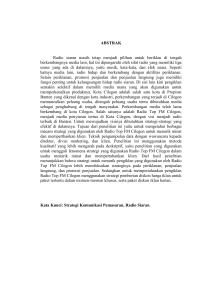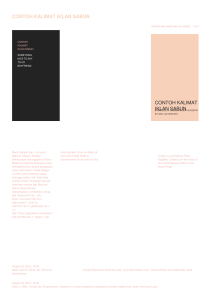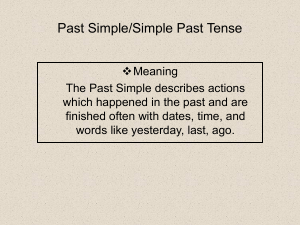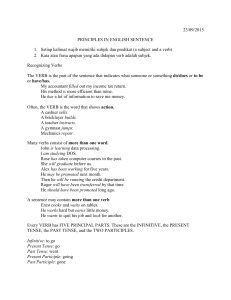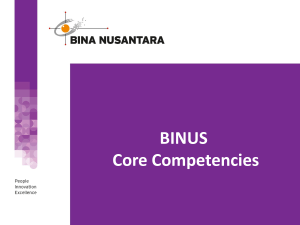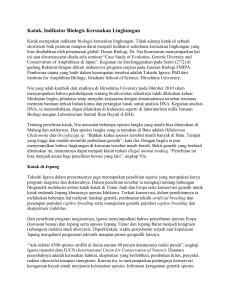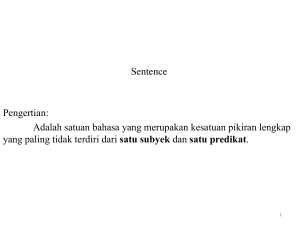tugas bahasa inggris - Official Site of Sujana
advertisement
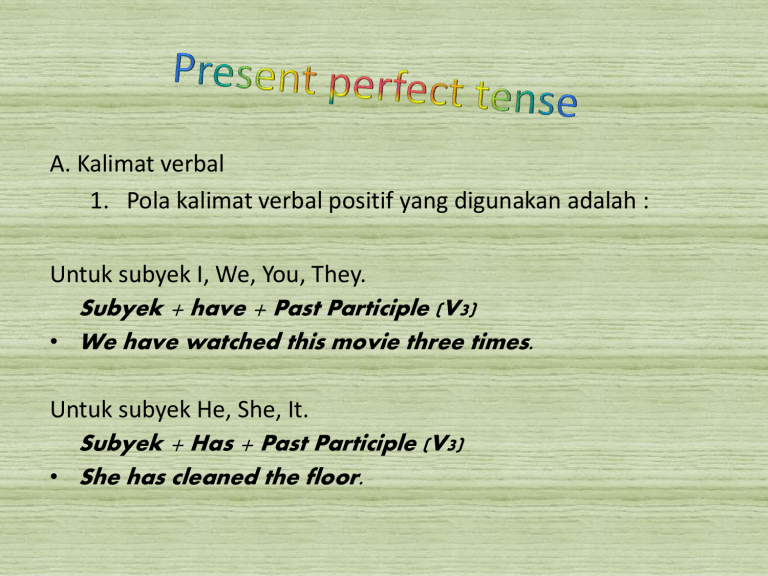
A. Kalimat verbal 1. Pola kalimat verbal positif yang digunakan adalah : Untuk subyek I, We, You, They. Subyek + have + Past Participle (V3) • We have watched this movie three times. Untuk subyek He, She, It. Subyek + Has + Past Participle (V3) • She has cleaned the floor. 3. Pola kalimat verbal tanya yang digunakan adalah : Untuk subyek I, You, They, We. – Have + subyek + Past Participle (V3) ? Untuk subyek He, She, It. – Has + subyek + Past Participle (V3) ? Contoh : • Has she taught this class for ten years? = Apakah dia telah mengajar kelas ini selama sepuluh tahun? • Have we have written letter to you? = Apakah kami telah menulis surat kepadamu? Jawaban untuk kalimat verbal tanya diatas dapat digunakan Yes, ... dan No, ... Contoh : • Has she taught this class for ten years? Jawaban : • Yes, she has • No, she hasn’t • Have we written letter to you? Jawaban : • Ye, we have = Ya • No, we haven’t = Tidak. • Have you finished your homework? Jawaban : • Ye, we have = Ya • No, we haven’t = Tidak. Apabila dalam kalimat verbal tanya digunakan kata tanya (question word), maka pola kalimat yang digunakan adalah : 1. Apabila kata tanya yang digunakan tidak menanyakan subyek kalimat, maka pola kalimat tanyanya : Untuk subyek I, We, You, They. – Question Word + Have + Subyek + Past Participle (V3) Untuk subyek He, She , It. – Question Word + Has + Subyek + Past Participle (V3) Contoh : • Where have those dogs slept? • How has the internet changed the education? • How long have you been vegetarian? 2.Apabila kata tanya yang digunakan menanyakan subyek, maka pola kalimat tanyanya : – Question Word + Has + Past Participle (V3) ? Catatan : Karena subyek yang dinyatakan tidak diketahui apakah berbentuk jamak (Plural) atau tunggal (singular), maka kata kerja bantu yang digunakan adalah has dengan anggapan subyeknya berbentuk tunggal. Contoh : • Who has broken the glass? Jawaban: I have broken the glass. • Who has helped you? Jawaban : She has helped me. • Who has swept the floor? Jawaban : They have swept the floor. Meskipun pada bentuk pertanyaannya subyek dianggap berbentuk tunggal (singular), tetapi apabila subyek dalam jawaban banyak lebih dari satu (plural), maka tetap digunakan have sesuai dengan subyek yang ada dalam kalimat jawabannya. B. Kalimat Nominal 1. Pola kalimat Nominal positif yang digunakan adalah : a. Untuk subyek I, You, They, We. Subyek + Have + Been + Non Verb b. Untuk Subyek He, She, It Subyek + Has + Been + Non Verb Catatan : Non verb (bukan Kata kerja) dapat berupa kata benda, kata sifat atau kata keterangan. Contoh : • I have been in love with this city. • She has been here since yesterday. • Diego has been my friend for 30 years. • He has been vegetarian for 5 years. 2. Pola kalimat nominal negatif yang digunakan adalah a. Untuk subyek I, You, They, We. Subyek + Have + not + been + Non Verb b. Untuk subyek He, She, It. Subyek + Has + not + been+ Non Verb Contoh : • I have not been in love with this city. • She has not been here since yesterday. • Diego has not been my friend for 2 days. • He has not been vegetarian for 5 years. • She has not been ill. 3. Pola kalimat nominal tanya yang digunakan adalah : a. Untuk subyek I, You, They, We. Have + Subyek + Been + Non Verb ? b. Untuk subyek He, She, It. Has + Subyek + Been + Non Verb ? Contoh : • Have you been in love with this city? • Has She been here since yesterday? • How has computer technology affected dictionary making? Apakah dalam kalimat nominal tanya digunakan kata tanya(question word) maka pola kalimat yang digunakan adalah : 1. Apabila kata tanya yang digunakan tidak menanyakan subyek, maka pola kalimat tanyanya : Untuk subyek I, You, They, We. • Question word + have + subyek + been + Non Verb ? Untuk subyek He, She, It. • Question Word + has + subyek + been + Non Verb ? Contoh : • How has this season been important? • Where have you been? 2. Apabila kata tanya yang digunakan menanyakan subyek kalimatnya, maka pola kalimat yang digunakan : • Question Word + has + been + Non Verb ? Catatan : Kata kerja bantu has digunakan dengan anggapan bahwa subyek yang ditanyakan berbentuk tunggal. Contoh : • Who has been in your house since yesterday? 1. Unspecified Time Before Now We use the Present Perfect to say that an action happened at an unspecified time before now. The exact time is not important. You CANNOT use the Present Perfect use the Present Perfect with unspecific expressions such as: ever, never, once, many times, several times, before, so far, already, yet, etc. Examples: • I have seen that movie twenty times. • I think I have met him once before. • There have been many earthquakes in California. • People have traveled to the Moon. • People have not traveled to Mars. • Have you read the book yet? • Nobody has ever climbed that mountain. • A: Has there ever been a war in the United States? B: Yes, there has been a war in the United States. A. Experience • You can use the Present Perfect to describe your experience. It is like saying, "I have the experience of..." You can also use this tense to say that you have never had a certain experience. The Present Perfect is NOT used to describe a specific event. Examples: • I have been to France. THIS SENTENCE MEANS THAT YOU HAVE HAD THE EXPERIENCE OF BEING IN FRANCE. MAYBE YOU HAVE BEEN THERE ONCE, OR SEVERAL TIMES. • I have been to France three times. YOU CAN ADD THE NUMBER OF TIMES AT THE END OF THE SENTENCE. • I have never been to France. THIS SENTENCE MEANS THAT YOU HAVE NOT HAD THE EXPERIENCE OF GOING TO FRANCE. • I think I have seen that movie before. • He has never traveled by train. • Joan has studied two foreign languages. • A: Have you ever met him? B: No, I have not met him B. Change Over Time • We often use the Present Perfect to talk about change that has happened over a period of time. Examples: • You have grown since the last time I saw you. • The government has become more interested in arts education. • Japanese has become one of the most popular courses at the university since the Asian studies program was established. • My English has really improved since I moved to Australia. C. Accomplishments • We often use the Present Perfect to list the accomplishments of individuals and humanity. You cannot mention a specific time. Examples: • Man has walked on the Moon. • Our son has learned how to read. • Doctors have cured many deadly diseases. • Scientists have split the atom. D. An Uncompleted Action • We often use the Present Perfect to say that an action which we expected has not happened. Using the Present Perfect suggests that we are still waiting for the action to happen. Examples: • James has not finished his homework yet. • Susan hasn't mastered Japanese, but she can communicate. • Bill has still not arrived. • The rain hasn't stopped. E. Multiple Actions at Different Times • We also use the Present Perfect to talk about several different actions which have occurred in the past at different times. Present Perfect suggests the process is not complete and more actions are possible. Examples: • The army has attacked that city five times. • I have had four quizzes and five tests so far this semester. • We have had many major problems while working on this project. • She has talked to several specialists about her problem, but nobody knows why she is sick. Time Expressions with Present Perfect • When we use the Present Perfect it means that something has happened at some point in our lives before now. Remember, the exact time the action happened is not important. • Sometimes, we want to limit the time we are looking in for an experience. We can do this with expressions such as: in the last week, in the last year, this week, this month, so far, up to now, etc. Examples: • Have you been to Mexico in the last year? • I have seen that movie six times in the last month. • They have had three tests in the last week. • She graduated from university less than three years ago. She has worked for three different companies so far. • My car has broken down three times this week. NOTICE "Last year" and "in the last year" are very different in meaning. "Last year" means the year before now, and it is considered a specific time which requires Simple Past. "In the last year" means from 365 days ago until now. It is not considered a specific time, so it requires Present Perfect. Examples: I went to Mexico last year. I went to Mexico in the calendar year before this one. I have been to Mexico in the last year. I have been to Mexico at least once at some point between 365 days ago and now. Duration From the Past Until Now (Non-Continuous Verbs) • we use the Present Perfect to show that something started in the past and has continued up until now. "For five minutes," "for two weeks," and "since Tuesday" are all durations which can be used with the Present Perfect. Examples: • I have had a cold for two weeks. • She has been in England for six months. • Mary has loved chocolate since she was a little girl. • Although the above use of Present Perfect is normally limited to Non-Continuous Verbs and non-continuous uses of Mixed Verbs, the words "live," "work," "teach," and "study" are sometimes used in this way even though they are NOT Non-Continuous Verbs. Refference: • Englishpage.com
